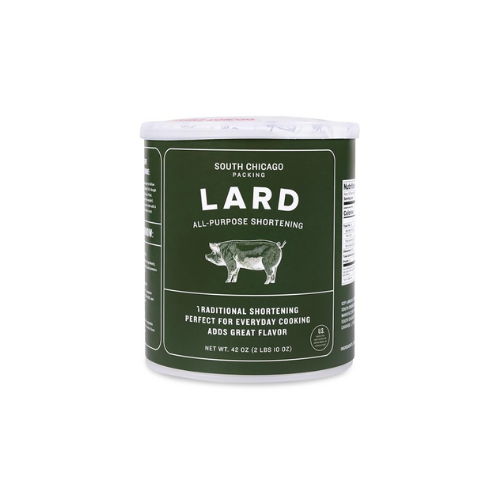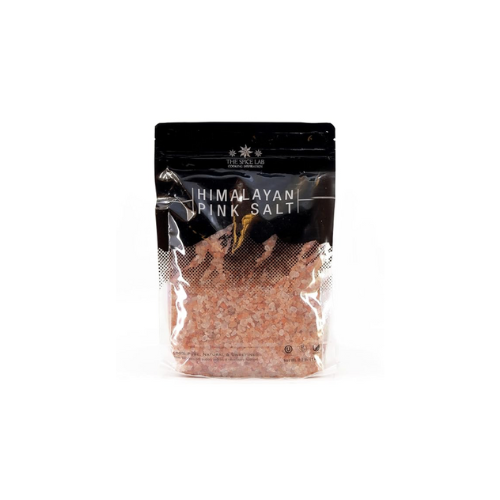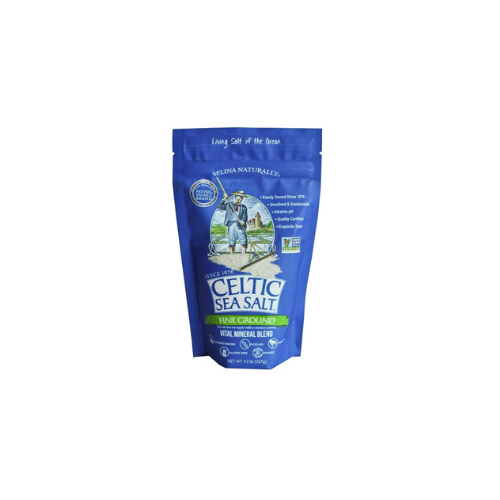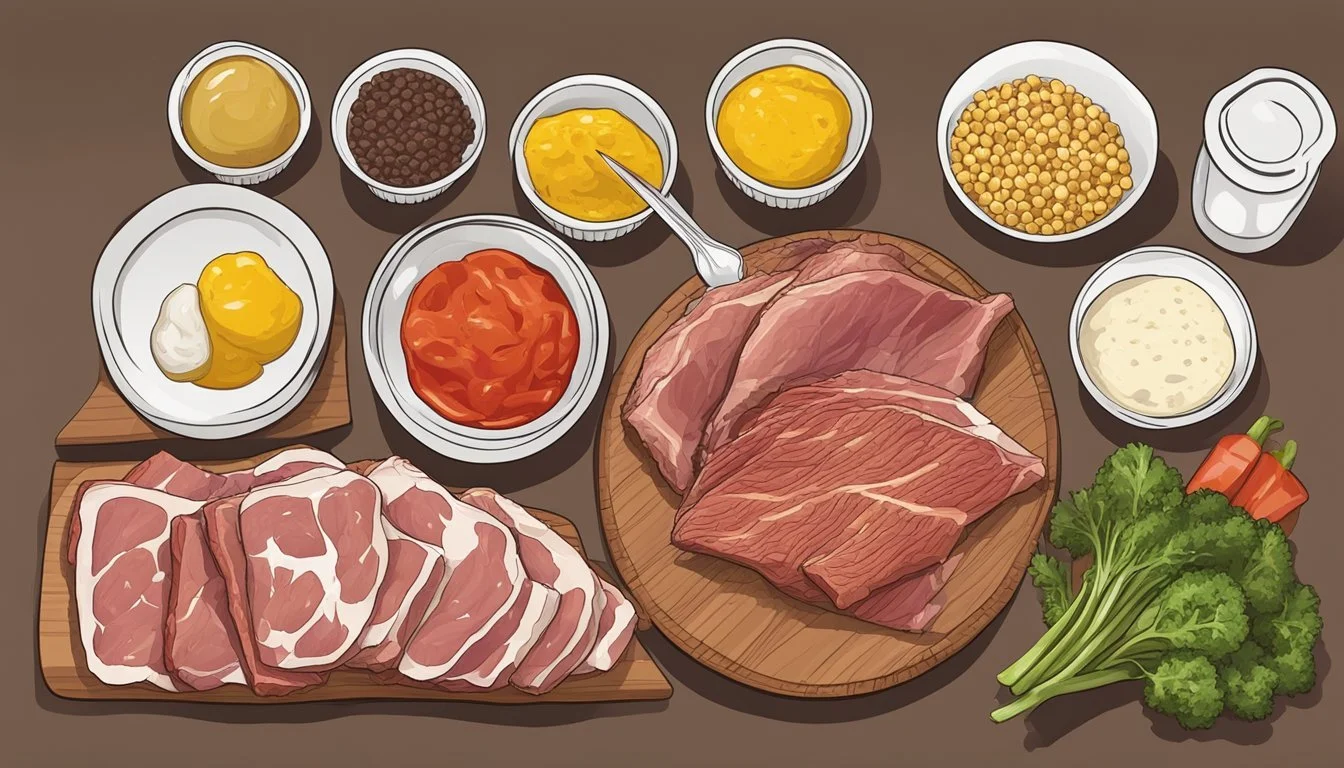What Condiments Are Allowed on Carnivore Diet
Understanding Dietary Restrictions
The carnivore diet, which is centered around the consumption of animal products, eschews plant-based foods, focusing on meat, fish, eggs, and some dairy products. For those adhering to this regimen, condiments can be a grey area that requires careful consideration. Traditional condiments such as ketchup, BBQ sauce, and salad dressings often contain sugars, vegetable oils, and additives that are not in line with the fundamental principles of the diet. Using condiments that deviate from the diet's restrictions could potentially introduce health issues associated with inflammatory ingredients and disrupt the nutritional benefits aimed for by strict adherents.
When it comes to flavoring and enhancing the meals within the boundaries of a carnivore diet, options do exist. Ideally, condiments should be free of sugar and artificial additives to maintain the integrity of the dietary philosophy. Pure fats like butter and certain dairy products like homemade sour cream are commonly accepted. Other flavor enhancers including lemon juice, which can be used in moderation, and fish sauce, which should be free from additional plant ingredients or sugars, are also considered suitable for some individuals following this dietary pattern.
Health implications are an important consideration for those following a strict carnivore diet. It's crucial to identify which condiments can be safely incorporated without negating the diet’s potential benefits. For this reason, individuals are encouraged to meticulously scrutinize ingredients and opt for condiments with simple, animal-based components. Some might choose a stricter path, excluding all but the most basic seasonings like salt, while others may find acceptable ways to introduce a wider range of tastes without straying from the nutritional focus of the carnivore lifestyle.
Fundamentals of the Carnivore Diet
The carnivore diet centers on consuming exclusively animal products and is often regarded for its purported health benefits.
Definition and Principles
The carnivore diet strictly consists of meat and other animal products, completely omitting plant-based foods. This diet operates on the principle that human beings are primarily suited for a carnivorous form of nutrition, consuming nutrient-rich meats and animal derivatives for all caloric intake. The defining characteristic is an emphasis on high-fat and high-protein foods with zero carbohydrates from plant sources.
Key Components:
Meat: Beef, pork, lamb, wild game
Poultry: Chicken, turkey, duck
Fish and Seafood: Salmon, sardines, trout
Animal Fats: Butter, tallow, lard
Dairy: Cheese, heavy cream (note: some individuals exclude dairy products)
For the most extensive selection, I suggest buying tallow and lard online!
Excluded Items:
Fruits and vegetables
Legumes and nuts
Grains and cereals
Sugars and sweeteners
Any processed food items that contain plant-derived ingredients
Health Benefits
Advocates of the carnivore diet suggest that it may lead to various health benefits, including weight loss, improvement in mood, reduction in inflammation, and enhanced mental clarity. While clinical data is sparse, anecdotal reports highlight:
Weight Management: Increased satiety from high-protein and fat consumption may contribute to weight loss and combat obesity.
Inflammation: Eliminating carbohydrates and sugars, which are purported to cause inflammation, could be beneficial for those suffering from chronic inflammatory conditions.
Cancer: Some proponents argue that a reduction in sugar intake can reduce the risks of certain types of cancer, due to sugar's role in insulin resistance and inflammation.
Note: Scientific research on the carnivore diet's long-term effects is limited, and health professionals raise concerns regarding its potential impact on heart health and nutrient deficiencies. It is crucial for individuals to consider both potential benefits and risks and consult healthcare professionals before making significant dietary changes.
Allowed Foods on the Carnivore Diet
The carnivore diet emphasizes the consumption of animal-based foods, excluding plant-based items. It allows for meat, specific animal fats, and seafood, with a focus on nutritional density and minimal processing.
Meat Varieties
On the carnivore diet, individuals prioritize consuming meat from various sources. Ruminant meats such as beef, lamb, and goat are highly recommended due to their nutrient profile. Organs are especially prized for their nutrient density, including liver, kidneys, and heart. Lean cuts and fattier portions both have a place on this diet, ensuring a range of fat intake.
Animal-Based Fats
Animal fats are a cornerstone of the carnivore diet, used both for cooking and as a source of nutrients. Some of the main fats included are:
Butter: Often used in cooking or as a topping for steaks
Tallow and Lard: Rendered fats from beef and pork, respectively
Duck Fat: A flavorful option for cooking
Fats from various meats and organs also contribute to the total fat intake.
Seafood
Seafood is a valuable component, offering variety and a wealth of nutrients. Fish and shellfish are included, providing not only essential protein but also omega-3 fatty acids. Choices range from fatty fish, like salmon and mackerel, to leaner options like tilapia and cod. Shellfish, including shrimp, oysters, and clams, also make for appropriate options within the carnivore diet.
Role of Condiments in the Carnivore Diet
Condiments play a supportive role in the carnivore diet, enhancing the flavor of meat-centric dishes without compromising the fundamental principles of this diet. These additions should contain no sugars or artificial additives and primarily focus on animal-derived or zero-carb products.
Salt and Seasoning
Salt is the cornerstone of seasoning, as it is essential for both flavor enhancement and electrolyte balance on a carnivore diet. Pepper and certain herbs and spices may also be used in moderation, provided they do not contain added carbohydrates or sugars. Users can incorporate:
Table Salt (Sodium Chloride)
Pink Himalayan Salt
Sea Salt
Black Pepper
The use of spices should be minimal and focused on those that do not contribute significant plant matter or carbohydrates.
Skip the lines and order your pink Himalayan salt, sea salt, and black pepper online for a stress-free shopping experience!
Carnivore Diet-Friendly Additions
Fat-based condiments such as butter, ghee, and tallow are completely acceptable, adding richness and flavor while staying true to the carnivorous approach. These fats are preferred for their high-quality animal origin and compatibility with high-heat cooking.
A limited selection of acids like vinegar and lemon juice may be utilized to add brightness to dishes. However, quantities should be kept small to ensure carbohydrate intake remains negligible. For approval of specific condiments, one should diligently inspect labels for unwanted ingredients. Examples of carnivore diet-friendly condiments include:
Unsalted Butter
Ghee (Clarified Butter)
Beef Tallow or other animal fats
Apple Cider Vinegar (in small amounts)
Lemon Juice (a squeeze for flavor)
This section emphasizes condiments that align with the carnivore diet's restrictive nature, aiming to maximize flavor without introducing non-animal elements.
Understanding Fats and Proteins
In the carnivore diet, fats and proteins take center stage, with a focus on their sources and roles in the body. Choosing the right types of each is critical for health benefits and diet adherence.
Saturated and Unsaturated Fats
Saturated fats stem predominantly from animal sources such as meat, including beef and bacon, and dairy products like butter. They are solid at room temperature and can contribute to the diet's high-fat macro goals. However, those following the carnivore diet should be aware of the debate regarding saturated fats and cholesterol levels, though recent studies have nuanced this relationship.
On the other hand, unsaturated fats—subdivided into monounsaturated and polyunsaturated (including omega-3 and omega-6 fatty acids)—are found in foods not typically included in the carnivore diet, such as nuts and seeds. Nevertheless, they can also be sourced from certain animal foods, like fish, and are essential for health due to their roles in inflammation regulation and cell structure.
Protein Sources
Proteins are fundamental on the carnivore diet and can be sourced from any animal-based food. Meat is an abundant provider of protein, necessary for the repair and growth of tissues. Choices like beef and bacon not only help meet daily protein requirements but also provide essential nutrients such as B vitamins.
Animal-based foods rich in proteins may also include organ meats, which are highly nutrient-dense. Bone marrow and meat stock are valuable for their collagen content and minerals, which add a variety of proteins beyond muscle meats. They also contain fats and are thus doubly beneficial for dieters focusing on increasing their intake of both macronutrients.
Nutrition and Nutrient Density
The carnivore diet emphasizes the consumption of animal products, which are naturally high in certain vitamins and minerals. The diet is specifically rich in nutrients that are essential for bodily functions, provided from high-quality animal sources.
Vitamins in Animal Foods
Animal foods on the carnivore diet are notable for their content of fat-soluble vitamins, particularly Vitamin A and Vitamin E. Vitamin A is abundant in liver and other organ meats, as well as in dairy products like butter. It plays a vital role in maintaining vision, immune function, and skin health. Vitamin E is found in animal fats and is important for its antioxidant properties, protecting cells from damage.
Vitamin A: Liver, dairy
Vitamin E: Animal fats
These vitamins contribute significantly to the overall nutrition profile of the carnivore diet, supporting a wide array of bodily processes.
Minerals and Electrolytes
Minerals and electrolytes are crucial for maintaining hydration, nerve function, and muscle function. The carnivore diet supplies a variety of these through the consumption of meat and fish. Sodium, potassium, and magnesium are electrolytes that are well-represented in meats and help regulate fluid balance and blood pressure.
Sodium is easily obtained from natural sources like meats or added table salt. Potassium is present in muscle meats and is vital for cardiovascular health. Magnesium, essential for over 300 biochemical reactions in the body, can be found in fish and shellfish.
Sodium: Present in meats, added salt
Potassium: Abundant in muscle meats
Magnesium: Found in fish, shellfish
These minerals are also often present in the animal-based condiments that can be consumed on the carnivore diet, such as bone broth.
Considerations for Condiment Use
When adopting the carnivore diet, individuals must be careful about their condiment choices to avoid inadvertently consuming disallowed or harmful ingredients.
Health Implications
Consuming condiments that contain added sugars and preservatives can negate the benefits of the carnivore diet. Hence, individuals need to opt for sugar-free options. The use of single-ingredient condiments like salt is often encouraged due to their simplicity and purity. Condiments with added sugars can lead to various health issues, including blood sugar spikes and inflammation.
Carnivore Diet Adaptations
Condiments consistent with the carnivore diet generally omit plant-based ingredients. However, certain homemade adaptations are acceptable. For instance, homemade sour cream and homemade ranch dressing can be made without additives, keeping with the diet’s philosophy. These homemade versions avoid unwanted ingredients and provide control over the final product.
Homemade Sour Cream: Combine heavy cream and a starter culture, ferment at room temperature
Homemade Ranch Dressing: Use a base of homemade mayonnaise and mix in fresh herbs and spices
Potential Allergens
While not everyone on the carnivore diet needs to avoid them, some may choose to stay away from nightshades and foods high in lectin, as they can be potential allergens or irritants. Animal-based fats like butter and tallow are recommended due to their minimal allergenic risk compared to plant-derived condiments.
Selecting condiments, individuals on the carnivore diet should carefully read labels to ensure they are free from common allergens or irritants, sticking to simple, whole-food options whenever possible.
Alternatives for Common Condiments
For individuals following a carnivore diet, traditional condiments like ketchup and BBQ sauce are off the table due to their sugar and vegetable oil content. This section explores dairy and sauce substitutes that align with the strict no-plant ethos of the carnivore diet.
Dairy Substitutes
Dairy provides several carnivore-friendly condiment alternatives. Homemade sour cream can be made from heavy cream and cultured buttermilk, left at room temperature for 24 hours. For a cheese sauce replacement, melting animal-based cheeses offers flavor without added sugars or seed oils. Butter is another excellent choice for adding richness to dishes.
Sauce Alternatives
When it comes to sauces, simplicity is key. Mustard, made primarily from mustard seeds, vinegar, and salt, is a suitable option. For mayonnaise, one can prepare it at home using egg yolks and animal fat instead of seed or vegetable oils. A mix of melted butter with herbs can serve as a stand-in for garlicky or herby sauces. Hot sauce can be acceptable if it's free of sugars and vegetable oils; check the labels for simple ingredients like chili pepper, vinegar, and salt. Steer clear of sugar-laden condiments like ketchup and BBQ sauce; if a tangy kick is desired, lemon juice or vinegar can sometimes be used sparingly.
Avoiding Unhealthy Ingredients
When adhering to a carnivore diet, it's essential to be vigilant about condiment choices, particularly avoiding those with unhealthy ingredients that can detract from the diet's benefits.
Artificial Additives
Condiments often contain artificial additives such as colorings, flavorings, and preservatives that don't align with the carnivore diet's emphasis on natural, animal-based foods. For example:
Colorings: They are often synthetic and can be found in products like ketchups and salad dressings.
Preservatives: Common in many processed foods, they extend shelf life but can introduce unwanted chemicals to the diet.
One should carefully read labels to ensure condiments are free from these substances.
Managing Sweeteners
Managing sweeteners, especially added sugars, is important on the carnivore diet. Sugars are carbohydrates and, thus, outside the scope of a meat-focused eating plan. Details to consider include:
Processed sugar: Often hidden in condiments like ketchup, it contributes to empty calories without nutritional benefits.
Added sugars: Items labeled as "low fat" or "reduced calorie" can be misleading, as they might contain high levels of added sugars to enhance flavor.
It's advisable to opt for condiments with no sugar added or to use natural sources of sweetness in moderation, such as homemade sauces using animal-based ingredients like cream.
Culinary Techniques for Flavor
In the realm of the carnivore diet, enhancing the natural taste of meats is a critical focus. By employing specific culinary methods, one can amplify the inherent flavors and introduce umami nuances without deviating from the diet's guidelines.
Enhancing Meat Flavor
Dry-Brining and Salting: Meats can be seasoned with coarse salt ahead of cooking time. This method, known as dry-brining, not only intensifies the flavor but also aids in moisture retention, producing a juicier outcome.
Reduction Sauces: Creating reduction sauces from meat drippings is a powerful way to concentrate flavors. Cooks can simmer the drippings until they thicken and coat the back of a spoon, offering an umami-packed glaze that complements the main dish.
Herbs Infusion: While some herbs may not align with a strict carnivore diet, those who incorporate animal-based fats can infuse butter or tallow with compatible herbs like rosemary or thyme to brush over meats for aromatic enhancement.
High-Heat Cooking Techniques: Utilizing methods such as grilling or searing can impart a more complex taste profile. The Maillard reaction that occurs provides a desirable char and a rich flavor dimension.
Slow Cooking: For cuts that benefit from longer cooking times, slow-cooking can tenderize the meat and deepen the taste. It allows seasonings such as black pepper or umami-rich spices, if considered permissible, to meld and intensify.
I always prefer buying slow cooker online because of the added convenience!
These techniques, when appropriately applied, can take a simple piece of meat and elevate it to a savor-worthy dish while maintaining the principles of the carnivore diet, keeping seasonings to a minimum and focusing on the natural flavor of the meat itself.














